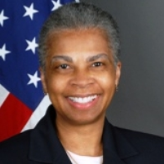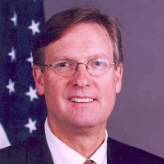Mauritius
Mauritius is a tiny island nation in the Indian Ocean, located more than 600 miles east of Africa. Once controlled by the French and British, Mauritius has lived a relatively quiet existence since gaining independence in the 1960s. At the time of its newfound freedom, Britain maintained control of the Chagos Archipelago which had been part of Mauritius. The archipelago included the island of Diego Garcia, which the British leased to the United States. During the Cold War, the US Navy established a naval base on Diego Garcia, turning it into a strategic hub for the US warships and long-range bombers. Since the 1980s Mauritius has sought the return of the archipelago to Mauritian control, with no success. The US, meanwhile, has not only maintained its naval and air force presence on Diego Garcia, but also used the base as one of the CIA’s secret prisons for hiding suspected terrorists.
Lay of the Land: The Republic of Mauritius consists of the Indian Ocean island of Mauritius and a few smaller islands situated about 600 miles east of Madagascar.
Portuguese sailors were the first known European visitors to Mauritius, in the 16th century. The island was occupied by the Dutch from 1598 to 1710 and named after Prince Maurice of Nassau. The French settled the island in 1722 and called it Île de France. It became an important way station on the route to India.
Official US representation in Mauritius dates from the end of the 18th century. An American consulate established in 1794 closed in 1911. It was reopened in 1967 and elevated to embassy status upon the country’s independence in 1968.
Relations between the United States and Mauritius largely revolve around trade. The United States is Mauritius’ third-largest market, but ranks 12th in terms of exports to Mauritius. The governments of Mauritius and the United States signed a Trade and Investment Framework Agreement (TIFA) in September 2006. In August 2009, the US and Mauitius began negotiating a Bilateral Investment Treaty.
The US imported a total of $168.9 million worth of goods in 2009 from Mauritius, and exported a total of $70 million, creating a trade deficit of $98.8 million. Exports from the US include aircraft parts (most for Air Mauritius), data processing machines, diamonds, jewelry, agricultural machines, and industrial chemicals. Imports to the US include clothing, sugar, jewelry, animals, and rum.
Mauritius-claimed Island Host to CIA Secret Prison
The State Department reported that in 2009 the Mauritian government generally maintained a solid human rights record. Problems that did occur involved police abuse of suspects and detainees; allegations of corruption in the police force; prison overcrowding; violence and discrimination against women; abuse of children; children in prostitution and child labor; some restrictions on workers in the Export Processing Zone (EPZ).
David S. King
Appointment: Jun 24, 1968
Presentation of Credentials: Jul 29, 1968
Termination of Mission: Left Tananarive, Aug 16, 1969
Note: Also accredited to Madagascar; resident at Tananarive.
Appointment: Apr 8, 1970
Presentation of Credentials: Jun 29, 1970
Termination of Mission: Left post, Jul 23, 1973
Appointment: Feb 28, 1974
Presentation of Credentials: May 24, 1974
Termination of Mission: Left post, May 10, 1976
Appointment: Jun 16, 1976
Presentation of Credentials: Jun 23, 1976
Termination of Mission: Left post, Sep 17, 1978
Appointment: Oct 12, 1978
Presentation of Credentials: Dec 20, 1978
Termination of Mission: Left post, Jan 20, 1980
Appointment: Mar 18, 1980
Presentation of Credentials: Apr 17, 1980
Termination of Mission: Left post, Sep 2, 1983
Appointment: Oct 7, 1983
Presentation of Credentials: Nov 7, 1983
Termination of Mission: Left post, Aug 16, 1986
Appointment: Oct 16, 1986
Presentation of Credentials: Nov 14, 1986
Termination of Mission: Left post, Oct 21, 1989
Appointment: Oct 10, 1989
Presentation of Credentials: Dec 6, 1989
Termination of Mission: Left post, Nov 19, 1992
Appointment: Nov 22, 1993
Presentation of Credentials: Dec 15, 1993
Termination of Mission: Left post, Apr 14, 1996
Note: Also accredited to the Comoros; resident at Port Louis.
Appointment: Jun 6, 1996
Presentation of Credentials: Aug 13, 1996
Termination of Mission: Left post Jul 27, 1999
Note: Also accredited to the Comoros; resident at Port Louis.
Appointment: Jul 7, 1999
Presentation of Credentials: Aug 24, 1999
Termination of Mission: Left post Mar 4, 2001
Note: Also accredited to the Comoros and the Seychelles; resident at Port Louis.
Appointment: Jan 30, 2002
Presentation of Credentials: Apr 26, 2002
Termination of Mission: Left post, Jun 17, 2005
Note: Also accredited to the Comoros and the Seychelles; resident at Port Louis.
There is currently no full-time ambassador from Mauritius to the US. Joyker Nayeck is the chargé d’affaires and has been in charge of the embassy since April 16, 2009. Nayeck and his wife Outra have three children.
- Table of Contents
- News
- Overview
- Basic Information
- History
- Newspapers
- History of U.S. Relations with Mauritius
- Current U.S. Relations with Mauritius
- Where Does the Money Flow
- Controversies
- Human Rights
- Debate
- Past Ambassadors
- Ambassador to the U.S.
- Embassy Web Site in the U.S.
- Comments
- Leave a comment
U.S. Ambassador to Mauritius

As a career diplomat with more than three decades of involvement in international affairs, Mary Jo Wills was confirmed by the United States Senate as the Ambassador to Mauritius and the Seychelles in December of 2009.
Previous U.S. Ambassador to Mauritius

Mauritius is a tiny island nation in the Indian Ocean, located more than 600 miles east of Africa. Once controlled by the French and British, Mauritius has lived a relatively quiet existence since gaining independence in the 1960s. At the time of its newfound freedom, Britain maintained control of the Chagos Archipelago which had been part of Mauritius. The archipelago included the island of Diego Garcia, which the British leased to the United States. During the Cold War, the US Navy established a naval base on Diego Garcia, turning it into a strategic hub for the US warships and long-range bombers. Since the 1980s Mauritius has sought the return of the archipelago to Mauritian control, with no success. The US, meanwhile, has not only maintained its naval and air force presence on Diego Garcia, but also used the base as one of the CIA’s secret prisons for hiding suspected terrorists.
Lay of the Land: The Republic of Mauritius consists of the Indian Ocean island of Mauritius and a few smaller islands situated about 600 miles east of Madagascar.
Portuguese sailors were the first known European visitors to Mauritius, in the 16th century. The island was occupied by the Dutch from 1598 to 1710 and named after Prince Maurice of Nassau. The French settled the island in 1722 and called it Île de France. It became an important way station on the route to India.
Official US representation in Mauritius dates from the end of the 18th century. An American consulate established in 1794 closed in 1911. It was reopened in 1967 and elevated to embassy status upon the country’s independence in 1968.
Relations between the United States and Mauritius largely revolve around trade. The United States is Mauritius’ third-largest market, but ranks 12th in terms of exports to Mauritius. The governments of Mauritius and the United States signed a Trade and Investment Framework Agreement (TIFA) in September 2006. In August 2009, the US and Mauitius began negotiating a Bilateral Investment Treaty.
The US imported a total of $168.9 million worth of goods in 2009 from Mauritius, and exported a total of $70 million, creating a trade deficit of $98.8 million. Exports from the US include aircraft parts (most for Air Mauritius), data processing machines, diamonds, jewelry, agricultural machines, and industrial chemicals. Imports to the US include clothing, sugar, jewelry, animals, and rum.
Mauritius-claimed Island Host to CIA Secret Prison
The State Department reported that in 2009 the Mauritian government generally maintained a solid human rights record. Problems that did occur involved police abuse of suspects and detainees; allegations of corruption in the police force; prison overcrowding; violence and discrimination against women; abuse of children; children in prostitution and child labor; some restrictions on workers in the Export Processing Zone (EPZ).
David S. King
Appointment: Jun 24, 1968
Presentation of Credentials: Jul 29, 1968
Termination of Mission: Left Tananarive, Aug 16, 1969
Note: Also accredited to Madagascar; resident at Tananarive.
Appointment: Apr 8, 1970
Presentation of Credentials: Jun 29, 1970
Termination of Mission: Left post, Jul 23, 1973
Appointment: Feb 28, 1974
Presentation of Credentials: May 24, 1974
Termination of Mission: Left post, May 10, 1976
Appointment: Jun 16, 1976
Presentation of Credentials: Jun 23, 1976
Termination of Mission: Left post, Sep 17, 1978
Appointment: Oct 12, 1978
Presentation of Credentials: Dec 20, 1978
Termination of Mission: Left post, Jan 20, 1980
Appointment: Mar 18, 1980
Presentation of Credentials: Apr 17, 1980
Termination of Mission: Left post, Sep 2, 1983
Appointment: Oct 7, 1983
Presentation of Credentials: Nov 7, 1983
Termination of Mission: Left post, Aug 16, 1986
Appointment: Oct 16, 1986
Presentation of Credentials: Nov 14, 1986
Termination of Mission: Left post, Oct 21, 1989
Appointment: Oct 10, 1989
Presentation of Credentials: Dec 6, 1989
Termination of Mission: Left post, Nov 19, 1992
Appointment: Nov 22, 1993
Presentation of Credentials: Dec 15, 1993
Termination of Mission: Left post, Apr 14, 1996
Note: Also accredited to the Comoros; resident at Port Louis.
Appointment: Jun 6, 1996
Presentation of Credentials: Aug 13, 1996
Termination of Mission: Left post Jul 27, 1999
Note: Also accredited to the Comoros; resident at Port Louis.
Appointment: Jul 7, 1999
Presentation of Credentials: Aug 24, 1999
Termination of Mission: Left post Mar 4, 2001
Note: Also accredited to the Comoros and the Seychelles; resident at Port Louis.
Appointment: Jan 30, 2002
Presentation of Credentials: Apr 26, 2002
Termination of Mission: Left post, Jun 17, 2005
Note: Also accredited to the Comoros and the Seychelles; resident at Port Louis.
There is currently no full-time ambassador from Mauritius to the US. Joyker Nayeck is the chargé d’affaires and has been in charge of the embassy since April 16, 2009. Nayeck and his wife Outra have three children.
Comments
U.S. Ambassador to Mauritius

As a career diplomat with more than three decades of involvement in international affairs, Mary Jo Wills was confirmed by the United States Senate as the Ambassador to Mauritius and the Seychelles in December of 2009.
Previous U.S. Ambassador to Mauritius








Comments